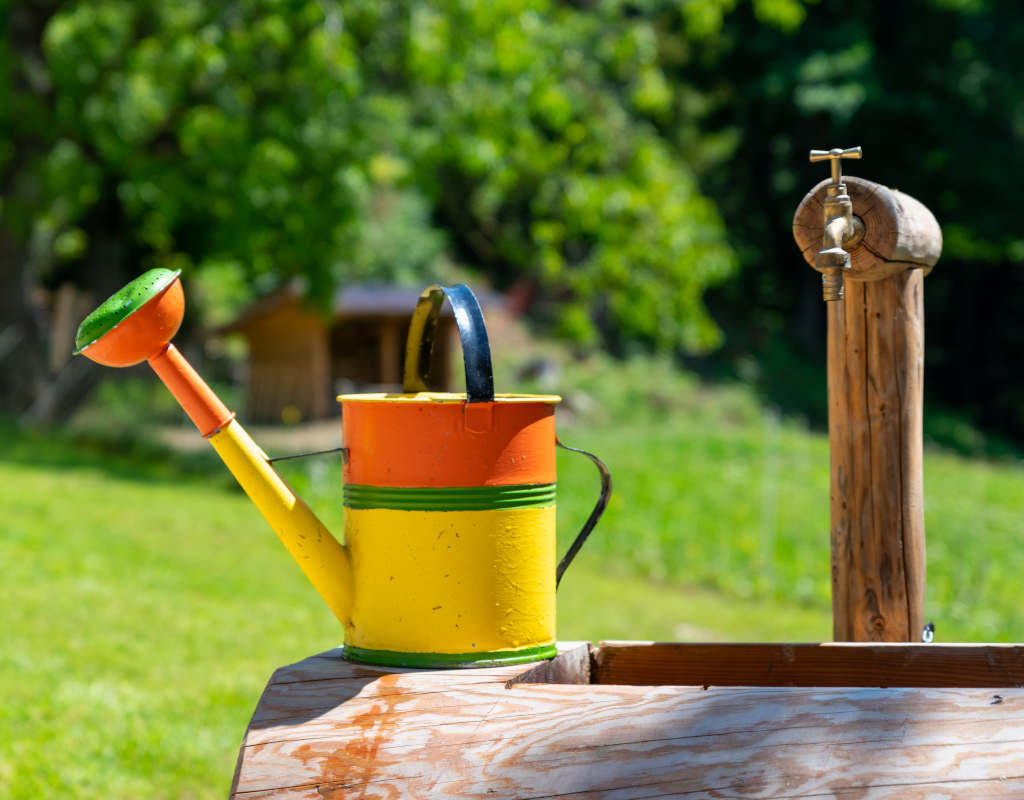Since our first lockdown home veggie patches have really taken off! Growing your own veggies is not only a great way for the family to enjoy the outdoors together, it will also save you money, and encourage the kids to try new foods.
Setting up your first family veggie patch may seem daunting if you haven’t lifted a shovel before but it doesn’t need to be complicated.
Do some research
A little bit of planning and research before you launch into planting will help you to be more successful from the get go. Read up on what you can grow in your area (think about temperatures, frosts, and dry conditions). And consider the season that you are planting in. Our seasonal calendar of easy to grow edibles is a great place to start. Don’t forget to let the kids choose a couple of things that they would like to grow too.
Growing from scratch
The cheapest way to grow your own veggies is using seeds, even those you have cultivated yourself from the veggie scraps. However, it can be a long process to grow edibles from seed so including some already sprouted seedlings in your planting is a great way to keep the kids interested as they can see progress right from the start.
For DIY seed trays, egg cartons, eggshells, old ice cube trays, newspaper shaped to form a “cup”, toilet rolls folded at the bottom, and paper cups are just some of the things that can be used. You just need something that can allow some growth and hold the dirt in while being able to drain any excess moisture away. Be sure to poke a few holes in the base and pop a waterproof liner or container underneath then pop them in a sunny spot inside. Kids will love to see those first signs of a plant sprouting! If the seed container is compostable then all the better as you can plant your seedlings straight out into the garden without disturbing the root system. Just make sure you loosen up the base of the container to let the roots start growing straight away.
Setting up your patch
For the veggie patch, find a spot in your garden that isn’t too close to where kids or pets like to play. A sheltered area with a combination of full sun and some shadier spots is ideal. Always check the plants that you are wanting to grow for the conditions that they require. Dig up the soil to break it up – one to two spade depths is sufficient – and remove any weeds. As long as you add some good compost to the soil you don’t need to add anything extra but some potting mix or general fertiliser can help. Plants like strawberries and tomatoes will appreciate some feeding throughout the fruiting season – just check with your garden centre for what’s best.
Any patch of dirt can be turned into a veggie patch but raised beds are great backsavers if you are able to include some. They help to keep the soil contained so that little gardeners aren’t quite so messy with their weeding too! Creating paths between your veggie beds can help harvesting and weeding, allowing you to reach all the plants (and weeds). Start with a small patch and work your way up so you’re not overwhelmed.
Don’t forget that you will need a nearby water source. Be mindful of water restrictions during our Kiwi summers – a tank to collect rainwater may be ideal for your eco-friendly patch! Talk to your local council to find out more.
If you don’t have space for a garden bed, there are lots of veggies that love to be grown in pots, especially tomatoes, capsicums, and herbs.
Plants that grow tall like tomatoes and capsicums will need some staking for support. Just pop a stake in and gently tie a sturdy section of the stem to it. Remember to leave some room for growth. You can use a few garden canes and string to create a trellis for plants like beans and peas to grow up.
A low maintenance garden
Maintaining a veggie patch can be a wonderful way to spend time together with the kids, learning about growing food and discovering new tastes. It can also be hard work on those days when you just don’t have the time or energy! Here’s a few things to consider to make your veggie growing a little bit easier.
- To help keep weeds down and retain moisture, add mulch around your plants.
- Having newly planted seedlings kicked over by digging cats, beautiful cabbages covered in caterpillars, or delicious strawberries nicked by the birds can be frustrating. Netting can help to keep the replanting and bug picking to a minimum.
- Slugs and snails do not care that you want your garden to be organic so unless you’re intending on watching the veggie patch constantly some form of control is required. Traps are available if you’re not keen on pest control chemicals.
- Perpetual plants are your best friends! Plants like loose leaf lettuce, kale, spinach, herbs, capsicums, tomatoes, rhubarb, and fruits are great because you only have to plant once and then by taking just what you are using that day the plant will (most of the time) keep producing for a whole season.
Investing in a few essential tools will also make gardening more pleasurable. A child’s set for the kids will encourage them to get involved. All you need to get started is a shovel and garden fork for digging and turning soil over, a cultivator for weeding, a trowel for planting, and a watering can or hose. Garden gloves, scissors for cultivating, and a kneeling pad are also helpful. Instead of a wheelbarrow I recommend a four-wheeled garden trolley as they are easier for the kids to use. I also prefer a large bucket to put my weeds in rather than a bag that blows away in the first breath of wind!
Rotate!
Don’t be tempted to plant out two dozen of the same plants all at once – unless you REALLY like that veg! For things like cauliflower, broccoli and cabbage it’s best to plant a few at a time (mixed combos are great for this) and then a few weeks later plant again so that you have a rotation of plants that are almost ready and those that still have some growing to do.
Try and try again
Not every veggie will grow successfully in your garden, no matter how much attention you give it. Others will thrive and you will learn which do better and which are best avoided.
Have you started a veggie garden or are you looking to start one? What would you like to grow at home?
See more:
 Written by Julie Scanlon
Written by Julie Scanlon
Julie is Editor for Kidspot NZ and our MVP. Her hobbies include laughing uncontrollably at her own jokes, annoying her family by asking questions about movie plots, and never taking anything too seriously. She speaks a little Spanish and a lot of Yorkshire.
Favourite motto to live by: “It ain’t nothing but a thing”







Leave A Comment
You must be logged in to post a comment.